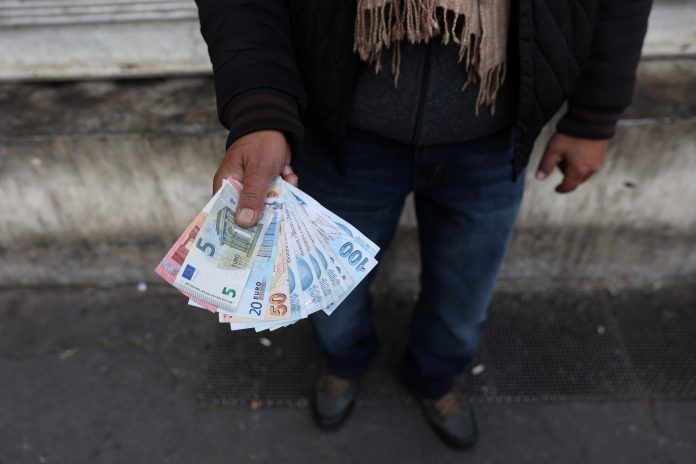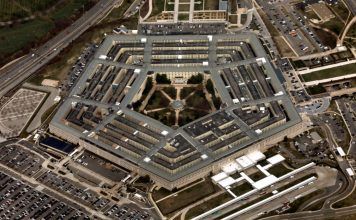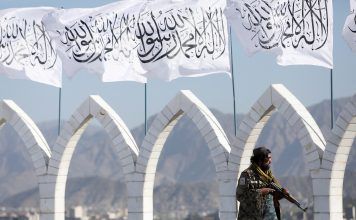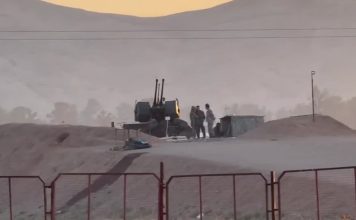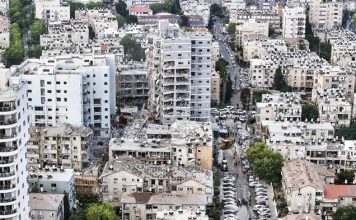The Iranian foreign exchange (forex or FX) market experienced one of its most volatile periods in the last week of January, with a dramatic devaluation of the Iranian rial.
On Jan. 23, the Iranian rial dropped to a record low of 600,000 to a U.S. dollar, 73,000 to a British pound, 64,000 to a euro, and 16,000 to a United Arab Emirates (UAE) dirham.
Although the Islamic Republic Central Bank (CBI) took immediate measures to control prices, the massive drop in the value of rial sent shockwaves through Iranian markets, the direct and indirect impacts of which cannot be swept under the carpet by the usual tactics of the government’s economic team.
In the past few months, CBI’s Governor, Mohammad Reza Farzin, and other President Ebrahim Raisi’s economic team members have repeatedly said that the government had “restored stability” to the Iranian forex market in 2023 and prevented a price hike.
However, the data shows that, on average, the dollar rose 44 percent against the rial between April and November 2023 compared to the same period in the previous year.
The dollar has performed strongly against rial since the start of the Hamas and Israeli conflict on Oct. 7, and its value will rise steadily while the Islamic Republic continues to fuel regional tension.
The Islamic Revolutionary Guards Corps (IRGC) launched a series of drone and missile attacks on Syria, Iran, and Pakistan between Jan. 16 and 17. Pakistan retaliated by targeting six locations 80 kilometers inside Iranian territory on Jan 18. As a result, the Iranian FX market saw a surge in the value of all foreign currencies against the rial.
Iran’s Ministry of Economic Affairs and Finance claims that the government has continued to support the investment market during the volatile economic times of the past two years.
Although some volatility is endemic to the investment market, the ministry argues it has kept its promise of preventing the repeat of the 2021 stock market crisis and insists that the trend is a natural part of trading stock.
The ministry asserts that the government’s current fiscal and monetary policy and next year’s budget will stabilize the economy, preventing investment in parallel markets and channeling the money instead into productivity.
The sharp rise in the dollar’s value against the rial has triggered reactions from Majlis (Iranian Parliament) representatives and has sent a shockwave through the Iranian markets. The trading of mobile phone and household appliances stocks was halted in response to this development, leading to market uncertainty and instability.
Also, the car market experienced a substantial price increase, with imported cars seeing an average price hike of 7.1 percent, domestic products rising by an average of 3.3 percent, and domestically assembled cars witnessing a price increase of 1.87 percent within a short period.
Meanwhile, the government has followed its customary approach of having the CBI inject cash into the economy to stabilize the market and control prices. There are also indications that the domestic media has been directed to downplay the impact of the volatile FX market on other sectors of the economy.
The Islamic Republic is adamant about reducing the dollar price to 500,000 rial. Meanwhile, state officials have blamed perceived “enemies” for the massive drop in the value of rial.
The impending review of Iran’s budget bill for the upcoming fiscal year, which will take effect on March 21, has also been a concern. The budget faces several challenges, such as operating deficits and irregular revenue.
The instability in the FX market and its potential adverse effects on other sectors could pressure lawmakers during the budget approval process. The government is likely to take measures to prevent such challenges from impacting the ratification of the budget bill by the Majlis.
In response to these economic challenges, the government is expected to take action to mitigate potential negative impacts on various markets. The efforts made by the CBI to stabilize foreign currency prices towards the end of the year were predictable moves considering these circumstances.
Economists have warned about the possibility of the dollar exceeding 600,000 rial by March because of limited foreign exchange reserves, resistance to foreign exchange policies, and potential implications for budget ratification and market stability.
More significantly, the Islamic Republic still needs to generate public enthusiasm for the Majlis elections scheduled for March 1. However, the regime has faced challenges in generating enthusiasm for the elections because of the government’s failure to manage the economy.
The increase in the price of most foreign currencies has directly impacted the cost of goods and services in Iran, resulting in a decline in the potential voter population. The dismal economic situation poses a significant challenge for the Islamic Republic to mobilize support for the electoral process.
Data shows that the U.S. dollar directly influences a substantial portion of Iran’s economy. More than 80 percent of the price of goods, 70 percent of the price of services, 90 percent of investment costs, and the prices of most imported goods are determined by the value of the U.S. dollar. This high dependency level underscores Iran’s economy’s vulnerability, fluctuating according to the U.S. dollar exchange rate.
The trade deficit in the non-oil sector has significantly contributed to the imbalance in Iran’s FX market and the government’s ability to generate revenue. Data shows the country’s trade balance has reached a negative $14 billion.
According to a report by the Islamic Republic of Iran Customs Administration (IRICA), Iran’s non-oil exports stood at $40.47 billion between March and December 2023, while it imported $54.36 billion worth of goods during the same period.
The substantial negative trade balance in the non-oil sector, Iran’s limited access to its frozen foreign currency, and the suspension of nuclear negotiations with the West all contribute to a potential economic crisis in the coming months.

